

Table of contents
- Characteristics of the room bamboo
- location requirements
- substrate selection
- planting
- repot
- propagation
- watering routine
- fertilizer rules
- cut
- wintering
- Care mistakes and pests
- errors in maintenance
- spider mites
Contrary to its name, the room bamboo does not belong to the bamboo plants, but to the sweet grasses. Nevertheless, it impresses with its species-like shape, which, however, is associated with high care requirements.
Characteristics of the room bamboo
- Growth height: 60 centimeters
- Growth form: bushy
- Growth direction: upright
- Leaves: evergreen
- Leaf shape: oblong and grassy
- Leaf color: green
- Flowering period: June to August
- Flower shape: spike
- Flower color: yellow
- Toxicity: Yes, but only as a young plant
location requirements
An optimal location is the basis for a healthy and well-growing plant, which is why the choice of location is particularly important.
The chosen spot should be in a sunny spot, but protected from the midday sun. This leads to irreparable burns on the leaves over a short period of time. Ideally, the room temperature should be 21 degrees Celsius, with temperatures in the range of 18 to 25 degrees Celsius being tolerated without any problems. Temperatures below 15 degrees Celsius are not tolerated by the tropical room bamboo and lead to the plant dying.
A notice:
With a corresponding outside temperature, the bamboo can also be kept outside in summer, whereby the minimum temperature should not fall below 15 degrees Celsius. In addition, the location should be in a place protected from wind and rain.
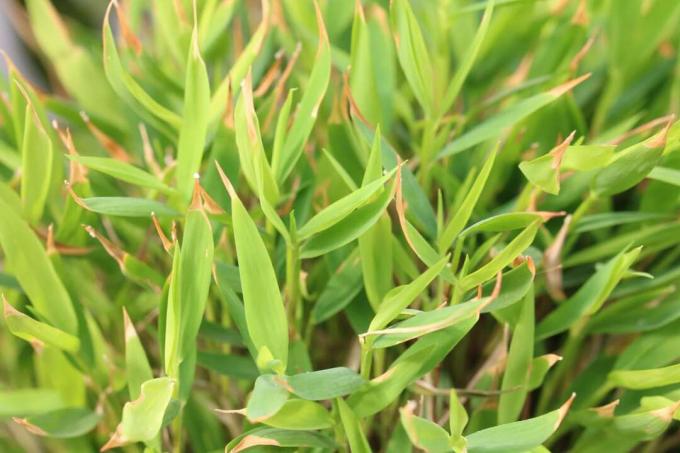
substrate selection
Pogonatherum paniceum prefers a well-drained and nutrient-rich substrate. Layers of soil that are too compact lead to reduced water drainage and thus to waterlogging, which is very poorly tolerated and often leads to dangerous root rot.
The combination of different individual materials has therefore proven its worth in practice:
- garden soil
- gravel
- sand
- granules
- coconut fibers
planting
The indoor bamboo is mainly cultivated in tubs due to its temperature sensitivity. The optimal planter should be at least twice as wide as the root ball to provide enough space for the extensive root system. To make it easier to repot later, we also recommend lining the pot before filling the substrate with a plastic sheet, with several holes at the bottom for the drainage of excess water should.
When planting, it is also important to ensure that both the trunk and around a quarter of the root ball look out of the ground to prevent excessive moisture penetration.
repot
Due to the constant growth in particular, annual repotting in a larger planter is urgently required. The next larger pot should be at least two centimeters larger in diameter than the previous one to give the room bamboo enough space to grow again. When removing the plant from the currently occupied pot, most of the substrate on the roots should be removed. This enables a thorough examination and shortening of the root area in the event of rotting processes and other injuries.
The appearance of root rot is a sign that the substrate is too wet, and repotting is an excellent opportunity to improve the situation.
Possible activities to improve water drainage are:
- insert a drainage
- putting drainage holes in the bottom of the pot
- Admixture of gravel or expanded clay
Finally will Pogonatherum paniceum transplanted into the new vessel and watered extensively to stimulate rooting.
propagation
For the propagation of Pogonatherum paniceum There are three methods to choose from, all of which are considered promising. In addition to the division of the root ball and the separation of a root stolon, sowing has also become established.
The sowing of new plants takes place with the help of the harvested ears, which are sown in a seed tray. With sufficient watering, small young plants are already available after six weeks, which can be pricked out at a height of ten centimetres.
Propagation via the roots is particularly useful when repotting, as the plant has to be removed from its planter for this purpose. The process is then as follows:
- Liberate the root ball generously from the substrate
- Divide the root ball into a maximum of two parts with a sharp knife
- Transplant sections into their own pots
A notice:
Propagation via a division form also ensures a renewed growth spurt in the mother plant and thus contributes to the health of the plant.
watering routine
In addition to the previously mentioned waterlogging, the bamboo also tolerates drought very poorly, which is why even watering has proven itself. The finger test can be used to quickly and easily determine how moist the soil substrate is. If the soil is dry to a depth of three centimetres, i.e. about the length of a finger phalanx, watering is required. Another sign of excessive drought is leaf curling.
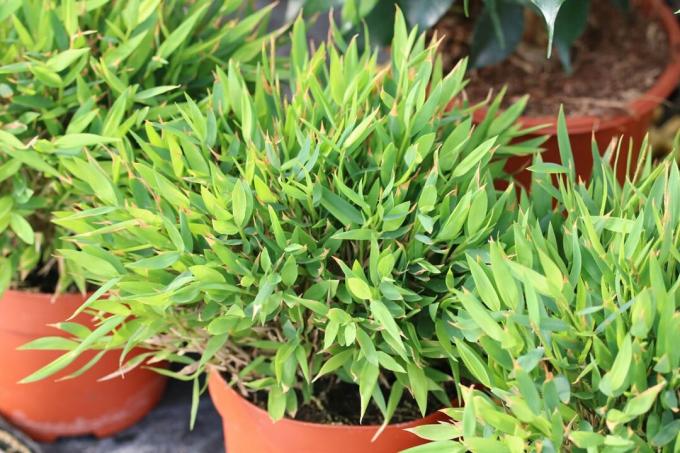
As a supplement to regular watering of the root ball, we also recommend spraying the above-ground parts of the plant to keep the surrounding air moist at the same time.
Due to the lime intolerance, the following liquids are suitable for irrigation and spraying:
- stale tap water
- filtered water
- rainwater
Tip:
An alternative to spraying is to shower the plant, which should only be done once a month to avoid waterlogging.
fertilizer rules
Pogonatherum paniceum is a houseplant that has a high nutrient requirement. It is therefore necessary to supply them with fertilizer regularly to support even growth. In addition, a lack of nutrients is characterized by wilted leaves, as well as discoloration and deformation. Nitrogen, phosphorus and potassium in particular are required for balanced growth.
When fertilizing, please note:
- Period: spring to autumn
- Interval: every two weeks
- Method: Liquid fertilizer together with irrigation water
cut
Due to its natural bushy growth, a pruning of the indoor bamboo is only necessary in exceptional cases. The largest proportion of pruning measures extends to dried shoots and undesirably grown stalks. A standard pair of household scissors is perfectly adequate as a cutting tool, although additional gloves offer protection against the sharp edges of the leaves. The best time for large-scale pruning is spring, whereas dried parts of plants should be removed all year round.
wintering
The indoor bamboo is not hardy and must therefore be overwintered in a frost-free place. The reduced amount of light in winter causes the plant to rest, so that the amount of watering can be significantly reduced. In addition, the application of fertilizer should be completely stopped until next spring to avoid oversupply.
Care mistakes and pests
Basically it shows Pogonatherum paniceum very resistant to diseases and pests. Nevertheless, incorrect care in particular leads to a weakened plant, which in turn is susceptible to any diseases.

errors in maintenance
Root rot is one of the most common diseases of indoor bamboo and is caused by a substrate that is too moist in combination with a room temperature that is too low. It is precisely these conditions that are optimal for the spread of the bacteria and fungi responsible for putrefaction, the spread of which occurs by means of spores. By attacking the sensitive roots, the uptake of the nutrients by the plant itself is prevented. As a result, despite adequate watering, wilted and discolored leaves appear, which are a clear indication of root rot. The next steps in treatment are as follows:
- pot the plant
- generously remove rotten root areas
- prepare a new planter with fresh substrate
- repot plant
In order to prevent the spores from spreading further, it is imperative to stop watering the indoor bamboo for at least two weeks. This leads to the death of the remaining spores and allows the plant enough time to recover.
spider mites
In particular, already weakened plants offer an optimal breeding ground for infestation by pests, which also include spider mites. In general, however, the bamboo only serves many insects as a temporary home and for spreading to a neighboring houseplant. Nevertheless, a pest infestation should never be taken lightly, but treated adequately.
combat
The first step is to shower the plant vigorously, which should wash away most of the adult animals. Most sticky eggs can be removed from the leaves with a damp cloth. After performing the above procedure, the room bamboo should be covered with a clear plastic bag. This ensures a significantly more humid room climate, which in turn contributes to the death of the remaining insects.
Other proven home remedies for spraying the plant are:
- Mixture of soap and water (ratio 1:70)
- Mixture of alcohol and water (ratio 1:70)
- neem oil
 garden editorial
garden editorial I write about everything that interests me in my garden.
Learn more about houseplants
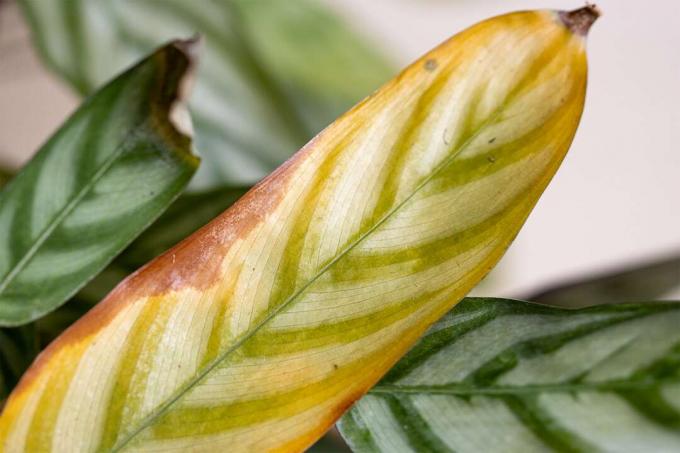
Calathea has yellow leaves: how to save?
When a Coriander (Calathea) gets yellow leaves, the cause is usually a lack of care. In order to save them from dying, a number of countermeasures must be taken, which are described in detail here.
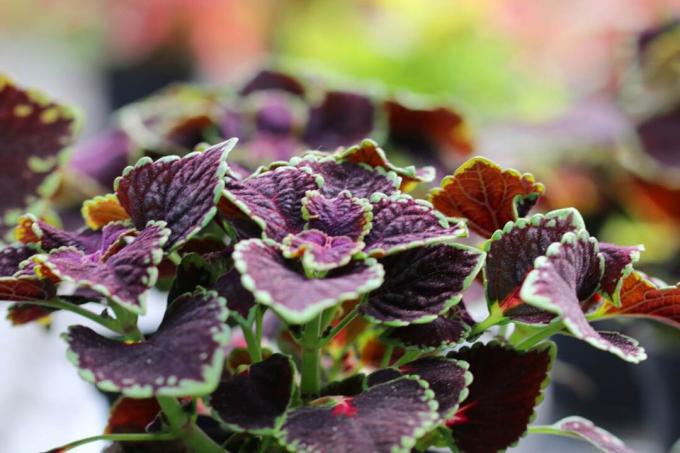
Coleus blumei: 21 tips for the red nettle
The colored nettle is a warmth-loving and easy-care foliage plant. The coloring of the leaves varies from monochromatic to variegated with a wide variety of drawings. Spectacular splashes of color can be set in beds, balcony boxes and tubs or as a houseplant.
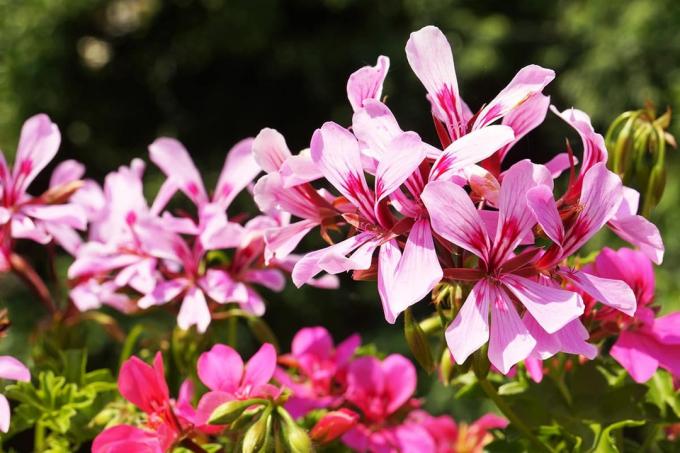
Scented houseplants: 25 scented plants for the home
An apartment without indoor plants is hardly conceivable. Scented plants in particular have a very special effect. Not only are they decorative, they can lighten the mood and rival any artificial home fragrance.

Lucky chestnut, Pachira aquatica: care from A to Z
The care of the lucky chestnut does not require any special expertise. However, if you know the way of life of this ornamental plant, you can better adapt site conditions and care measures to your needs. The plant can be easily propagated if a plant already exists.

Rubber tree: 13 care tips for Ficus elastica
The rubber tree is one of the most popular indoor plants. It is available in different varieties, easy to care for and stands out for its large leaves, which are colored in intense shades of green. Within a few years, it grows into a state small tree without much effort.

Ray Aralia, Schefflera: care from A to Z
Schefflera arboricola delights hobby gardeners with lush growth in suitable locations. It has hardly any special requirements and proves to be extremely easy to care for. Beginners will have a lot of fun with this plant because it forgives minor care mistakes and is adaptable.
